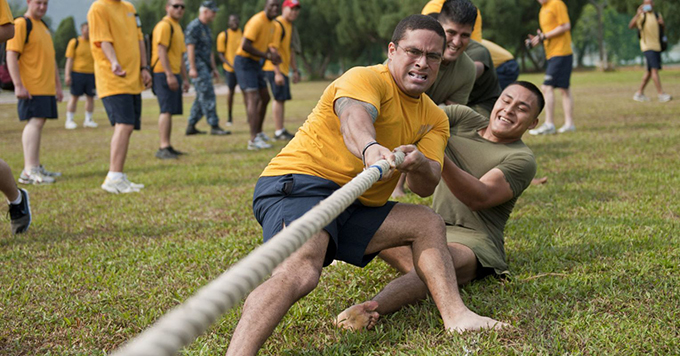
What is it that makes some want to stand out and call the shots, while others prefer to live in anonymity without hardly standing out?
We have all met people who seem to have competitiveness in their blood and who take advantage of every opportunity to measure themselves against others. But can you really have the competitive spirit in your blood?
The social context, extroversion and other factors
Although there are authors who speak of a “competitive gene” , there is surely no single biological factor that determines the degree of competitiveness of a person. Extraversion tends to predict a person’s perception of their competitive desire . In fact, being competitive entails orienting yourself towards the outside world and seeking to distinguish yourself to stand out. This means that the social and personal context influences how a person expresses their competitiveness.
A famous example from the world of sports can illustrate how social factors can not only influence, but unleash, the competitive spirit in someone: Michael Jordan, considered the best basketball player in history, had a very competitive spirit. In his youth, however, he did not particularly stand out. Not only was she left off his high school team, but his two brothers were, at one time, better athletes than him. On several occasions, Jordan has said that the rivalry with his brothers to obtain recognition from his father unleashed a “fire” in him that continued to flare up years later when he competed and someone sought to compete with him.
Jordan’s example shows that a person as competitive as him does not simply bring out his competitive genius from the beginning. There are both internal (biological) and external (social) factors that influence how competitiveness arises and is expressed in a person.
Pros and cons of competing with others
If we look at other areas related to professional sports, such as recreational sports and games, we see that they also promote competition. Almost every society in the world has established these types of arenas where people of all ages can challenge themselves and try to win. In the vast majority of competitions we find winners and losers, although sometimes a competition can be suspended or end in a tie.
The problems derived from competitiveness usually arise for two reasons: either it becomes excessive, or it goes outside the scope for which it was intended and begins to invade other spaces not assigned for competition.
Related to the first, some studies indicate that excess competitiveness can generate anxiety and narcissistic tendencies and increase impatience, irritability and even cardiovascular problems in certain people. Very competitive people usually want to control and dominate others, which often hinders and prevents good coexistence.
Compatible with coexistence?
To avoid this, many societies have created areas where competitiveness is compatible with coexistence. In sport, for example, competitiveness can be channeled in an orderly and regulated way. The rules allow athletes to measure their strength within established limits.
Furthermore, sport can foster collaborative competitiveness . This occurs when athletes strive and push each other to achieve excellence. In this case, the competition would not be a zero-sum game with one winner and many losers, but rather all the contenders to win a certain match, medal or title would be collaborators who need each other to improve themselves.
The thing is that competitors, whether in sport or outside of it, rarely experience it like this while competing. The etymology of the word also does not support such a peaceful interpretation of competition: com can mean both “with” and “against” and peto and petere refer not only to desire and aspire, but also to ways of orienting toward a goal and attacking. . Competing contains a tension and intensity that cannot be canceled without dissolving the competitive act itself.
It is precisely this intensity, inherent in the continuous interaction of attacking and defending, that gives competitors the opportunity to outdo each other. As long as they respect each other in the midst of competition, the desire to improve usually develops within healthy limits.
Competitiveness to educate?
Another problem with competitiveness is when it invades areas where it does not belong, for example education. Sometimes it is difficult to know if the competition belongs to a field or not. Many students think they are competing for the best grades, when, in reality, this is not the case, unless teachers make comparisons and competitive games between them. But turning children and young people, who go to school to learn, into rivals, is usually counterproductive to their learning, self-esteem and coexistence and goes against the very meaning of school.
School comes from the Greek term schole , which refers to free time during which human beings do not work or are under pressure to meet their basic needs. It is the time of leisure and enjoyment of life.
Since we have areas designated for competition, would it be possible to recover the original meaning of school and promote the time of enjoyment so that new generations gain the pleasure of learning and training without having to compete?
Author Bio: Jonas Holst is Full Professor of Philosophy and History of Thought at San Jorge University
